Additional notes (click to expand)
Commemorative
Atropos was the eldest of the three fates in Greek mythology who cut the thread of life. Her sisters, Lachesis and Clotho spun the thread and measured it, respectively.
Oakeley, Dr. Henry. (2011). A Year in the Medicinal Garden of the Royal College of Physicians, revised edition. Royal College of Physicians, London.
link
Horticulture
Treat as a biennial or short-lived perennial; grow in part shade in any loamy, moisture retentive soil, well drained, not too acidic (alkaline soil preferred). Propagate from fresh seed in cold glasshouse or frame, germination can be slow or erratic, propagating medium should be kept moist. Also by softwood cuttings of terminal shoots in spring, or by root cuttings in winter.
RHS. (1999). Dictionary of Gardening, RHS. Huxley, T p.283
Medicinal
Prescription only medicine: atropine (restricted)
Early physicians mixed a brew of deadly nightshade, hemlock, mandrake, henbane, opium and other herbs as a surgical anesthetic. Atropine still used today as an antidote to posioning from nerve gas & pesticide exposure.
Stewart A.(2009) Wicked Plants. Algonquin Books of Chapel Hill. p.31
Culpeper wrote 'the nightshade bears a very bad character as being of a poisonous nature' & did not recommend use internally at all. Externally he still warned of danger but suggests the leaves and roots successful applied as a poultice to inflammatory swellings such as tumours, cancerous ulcers, hard breast swellings.
Culpeper, Nicholas. (1983). Culpeper's Colour Herbal, W. Foulsham & Co. Ltd.. Potterton, David p.134
Used medicinally to dilate the pupil, as a pre-medication to dry up bronchial secretions & to speed up the heart rate.
Oakeley, Dr. Henry. (2011). A Year in the Medicinal Garden of the Royal College of Physicians, revised edition. Royal College of Physicians, London. p.61
link
Acetylcholine antagonists- contain atropine and scopolamine, used to dilate the pupil; speed up the heart; dry up saliva and gastric secretions, and to treat organophosphorous and mushroom poisoning & motion sickness.
Oakeley, Dr. H.F. (2013). Medicines from RCP plants label list 5-2013.docx.
A narcotic herb that relieves spasms and reduces secretions of the mouth, bronchi and stomach. Cultivated for the pharmaceutical industry, mainly in E. Europe, for the alkaloid atropine, which dilates the pupil of the eye. Has been used internally for asthma, kidney stones & gallstones, Parkinson's disease, myocardial infarction, hypotension, hyperacidity, gastric ulcers, colic, motion sickness. Externally in bandages, for rheumatic & muscular pain, in eye drops for diagnosis and surgery. Used in homeopathy for sunstroke, painful menstruation, and infections or inflammations characterized by sudden onset, redness & violent pain. The whole plant including roots is harvested.Whole plants are cut when flowering and dried for processing into dry and liquid extracts, tinctures, liniments, bandages, and glycerin preparations. Roots of 2-3 year old plants are lifted in autumn and procesed using a similar method. Alkaloid content is higher in sunny positions and in warm dry summers.
Bown D.(2002) The RHS Encyclopedia of Herbs & Their Uses.Dorling Kindersley Ltd. p.138
Atropa belladonna Atropine. Atropa belladonna is a member of the Solanaceae, a family of plants some of which contain very powerful alkaloids such as atropine, hyoscine and scopolamine. It is atropine that is relevant to the cardiovascular system since it blocks the parasympathetic action of the vagus nerve and increases the heart rate. This is of particular importance when a slow heart rate is a problem in cardio-pulmonary resuscitation. In addition the effect of atropine in increasing heart rate led to the understanding of how the autonomic nervous system controlled heart rate and function.
William Harvey and plant derived medicines currently used in cardiovascular medicine, Prof Michael de Swiet's Notes 2018
Nomenclature
Atropa comes from one of the three Fates of Greek mythology. Each Fate had a role in determining human destiny. Atropos brought death at the time and manner of her choosing.
Stewart A.(2009) Wicked Plants. Algonquin Books of Chapel Hill. p.31
Other common names; banewort, black cherry,devil's berries, dwale, dwayberries, great morrel, naughty man's cherry, sleeping powders.
The Royal Horticultural Society Horticultural Database, available at www.rhs.org.uk
The common name Dwale comes from a Nordic word for something that causes stupor.
Bown D.(2002) The RHS Encyclopedia of Herbs & Their Uses.Dorling Kindersley Ltd. p.138
Belladonna is a corruption of Bella Dona - Latin for Wars+gifts and from Bellona the goddess of war, whose priestesses used the juice to poison arrow heads.
Oakeley, HF et al (2016 A Garden of Medicinal Plants p.24
Name updated to A. bella-donna ( hyphen) 18/01/2021 AT
Plants of the World online, Kew Science http://plantsoftheworldonline.org/taxon/urn:lsid:ipni.org:names:814358-1
link
Other use
Deadly nightshade. Dwale. Morella, Solatrum, Hound's berries, Uva lupina, Cucubalus, Solanum lethale. Atropa derives from Atropos the oldest of the three Fates of Greek mythology who cut the thread of Life (her sisters Clotho and Lachesis spun and measured the thread, respectively). belladonna, literally, means 'beautiful lady' and was the Italian name for it. Folklore has it that italian ladies put drops from the plant or the fruits in their eyes to make themselves doe-eyed and beautiful. However, this is not supported by the 16th and 17th century literature, where no mention is ever made of dilated pupils (or any of the effects of parasympathetic blocade). Tournefort (1719) says 'The Italians named this plant Belladonna, which in their language signifies a beautiful woman, because the ladies use it much in the composition of their Fucus [rouge or deceit or cosmetic] or face paint.' Parkinson says that the Italian ladies use the distilled juice as a fucus '.. peradventure to take away their high colour and make them looke paler.' I think it more likely that they absorbed atropine through their skin and were slightly 'stoned' and disinhibited, which made them beautiful ladies in the eyes of Italian males. Distribution: Europe, North Africa, western Asia. Culpeper (1650) writes: 'Solanum. Nightshade: very cold and dry, binding … dangerous given inwardly … outwardly it helps the shingles, St Antonie's Fire [erysipelas] and other hot inflammation.' Most of the 16th, 17th and 18th century herbals recommend it topically for breast cancers. Poisonous plants were regarded as 'cold' plants as and excess of them caused death and the body became cold. They were regarded as opposing the hot humour which kept us warm and alive. Poultices of Belladonna leaves are still recommended for muscle strain in cyclists, by herbalists. Gerard (1633) writes that it: 'causeth sleep, troubleth the mind, bringeth madnesse if a few of the berries be inwardly taken, but if more be taken they also kill...'. He was also aware that the alkaloids could be absorbed through the skin for he notes that a poultice of the leaves applied to the forehead, induces sleep, and relieves headache. The whole plant contains the anticholinergic alkaloid atropine, which blocks the peripheral actions of acetylcholine in the paraympathetic nervous system. Atropine is a racemic mixture of d- and l- hysocyamine. Atropine, dropped into the eyes, blocks the acetylcholine receptors of the pupil so it no longer constricts on exposure to bright light - so enabling an ophthalmologist to examine the retina with an ophthalmoscope. Atropine speeds up the heart rate, reduces salivation and sweating, reduces gut motility, inhibits the vertigo of sea sickness, and is used to block the acetylcholine receptors to prevent the effects of organophosphorus and other nerve gas poisons. It is still has important uses in medicine. Atropine poisoning takes three or for days to wear off, and the hallucinations experienced by its use are described as unpleasant. We have to be content with 'madness', 'frenzie' and 'idle and vain imaginations' in the early herbals to describe the hallucinations of atropine and related alkaloids as the word 'hallucination' in the sense of a perception for which there is no external stimulus, was not used in English until 1646 (Sir T. Browne, 1646).
Oakeley, Dr. Henry F. (2013). Wellcome Library notes.
link
Italian women were said to drop mild tinctures of deadly nightshade into their eyes to dilate the pupils which was considered attractive. [but see note above].
Stewart A.(2009) Wicked Plants. Algonquin Books of Chapel Hill. p.31
Notes by Henry Oakeley from Lindley's 'Flora Medica' (1838):
Deadly Nightshade, a member of the Solanaceae family of plants, is found in woodlands and pasture throughout Europe, flowering in June and its fruit being ripe in August. The shiny black berries taste sweet (we are told) and are well recognised as being poisonous, due to the alkaloid atropine which they contain. Lindley calls it ‘A dangerous narcotic’ and describes the consequences of eating them ‘the symptoms which they induce are those of intoxication, accompanied by fits of laughter and violent gestures; great thirst, difficulty of deglutition, nausea, dilatation of the pupil, with the eyelids drawn down; redness and tumefaction of the face, stupor or delirium, a low and feeble pulse, paralysis of the intestines, convulsions and death. In medicine Belladonna ... is extensively employed especially in producing a dilatation of the pupil when an infusion is dropped into the eye’. All these are the effects of atropine overdose as we know them today, summed up by the medical student mnemonic ‘Hot as a Hare, Dry as a Bone, Red as a Beet, Mad as a Hatter, Blind as a Bat’. Lindley also reported that some authorities believed that it use protected one against scarlet fever, but he sounds doubtful! If so he was right.
Lindley, John. (1838). Flora Medica, Longman, Orme, Brown, Green & Longmans
Folk lore and magic traditions about this plant are discursively but intriguingly discussed in a paper on the names and popular uses of these plants in Eastern European countries. There is much about its role in witchcraft and the casting of spells.
Waniakowa J. 2007. Mandragora and Belladonna – the names of two magic plants. Studia Linguistica Universitatis Iagellonican Cracoviensis, 124, 161-173
Toxicity
Contains atropine, which causes rapid heart beat, confusion, hallucinations and seizures. Medical students use this mnemonic to recognise signs of poisoning, 'Hot as a hare, blind as a bat, dry as a bone, red as a beet, and mad as a hatter.'
Stewart A.(2009) Wicked Plants. Algonquin Books of Chapel Hill. p.31
Contains alkaloids, atropine, hyoscyamine & scopolamine.
Oakeley, Dr. Henry. (2011). A Year in the Medicinal Garden of the Royal College of Physicians, revised edition. Royal College of Physicians, London. p.61
link
Geographical distribution
- Africa, Northern Africa, Algeria
- Africa, Northern Africa, Morocco
- Asia-Temperate, Western Asia, Iran
- Asia-Temperate, Western Asia, Turkey
- Europe, Eastern Europe, East European Russia
- Europe, Eastern Europe, Ukraine
- Europe, Middle Europe, Austria
- Europe, Middle Europe, Belgium
- Europe, Middle Europe, Czech Republic
- Europe, Middle Europe, Germany
- Europe, Middle Europe, Hungary
- Europe, Middle Europe, Netherlands
- Europe, Middle Europe, Poland
- Europe, Middle Europe, Switzerland
- Europe, Northern Europe, Great Britain
- Europe, Southeastern Europe, Albania
- Europe, Southeastern Europe, Bulgaria
- Europe, Southeastern Europe, Greece
- Europe, Southeastern Europe, Italy
- Europe, Southeastern Europe, Romania
- Europe, Southeastern Europe, Yugoslavia
- Europe, Southwestern Europe, France
- Europe, Southwestern Europe, Portugal
- Europe, Southwestern Europe, Spain
- Northern America, Southeastern U.S.A., Georgia
Podcast
Atropa bella-donna L.
Family: SOLANACEAEGenus: Atropa
Species: bella-donna L.
Common names: Deadly Nightshade; Belladonna
Distribution summary: Eurasia, N.W.Africa
Habit: Perennial
Hardiness: H5 - Hardy; cold winter
Habitat: Deciduous forests, damp, shady spots
Garden status: Currently grown
Garden location: Europe & Middle East (J)
Flowering months: June, July
Reason for growing: Medicinal, toxic, prescription only medicine
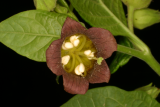
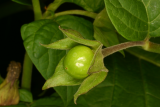
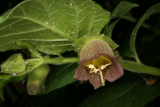
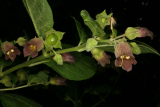
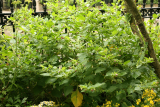
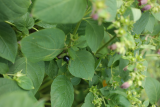

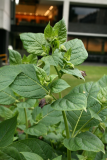
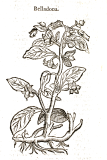

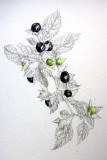
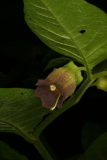
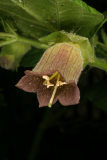

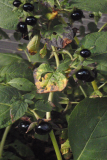
.JPG)